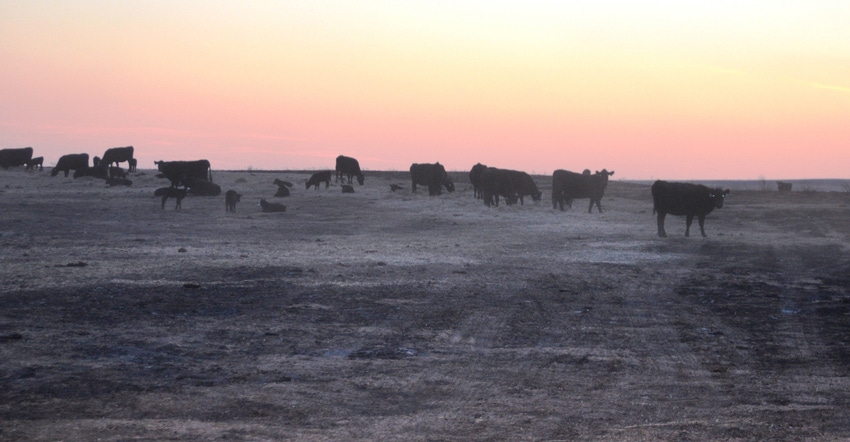February 28, 2019

It may seem like the last thing to think about as the snow flies, the ice piles up and the baby calves come thick and fast. But top of mind or not, fire season is right around the corner. When the winds of March pick up, the grasslands will dry out fast, and last fall’s plentiful growth has left a pretty hefty fuel load in a lot of areas.
With any luck, spring will permit a healthy amount of prescribed burning that will mitigate the wildfire risk.
But as the devastating Anderson Creek and Starbuck fires remind us, wildfire danger often hits red-flag warning several weeks ahead of the ideal prescribed burn date.
There is no doubt that the plentiful moisture of the late fall and winter in much of the state will help reduce the danger. But the extreme drought of last summer in the Flint Hills left a considerable dry mat on the ground, even as some grass regrew into it.
It doesn’t take long for that fuel load to turn tinderbox dry when the sun shines and the wind blows, especially in the weeks before the native grasses break dormancy and begin to green up.
Prepare now
That serves as a reminder that it’s probably a good idea to do a little prep work, just in case it proves necessary to answer a fire call in a hurry.
For starters, check the tractor battery and tires. Make sure everything is fully charged and aired up. It’s not a bad idea to have a disc in a space where it will be easy to hook it up in a hurry if you need to. If the weather service issues a red-flag warning, filling up a couple of water tanks is a good idea.
In the Gyp Hills, where the last two enormous fires occurred, there is plentiful fuel, thanks to higher-than-average fall rains, which contributed to grass growth.
Rancher Ted Alexander, whose Alexander Ranch almost all burned in the Anderson Creek fire in 2016, says his ranch and the neighboring ranch are pretty well-prepared for fire season. However, fuel load is a concern, especially in the miles between Anderson Creek and Starbuck, which hasn’t had much prescribed burning and does have plentiful brush and grass.
The Anderson Creek fire burned 397,420 acres, a record for Kansas to that point. The record stood only one year. The following year, in early March 2017, the Starbuck fire burned more than 500,000 acres in Kansas and an additional 300,000 in Oklahoma.
Starbuck also burned hotter and faster, and changed direction more often than Anderson Creek, resulting in far more loss of wildlife, cattle, homes and barns. Thousands of head of cattle were either killed outright or so badly injured they had to be destroyed.
Weather outlook
The long-range weather forecast is calling for wet weather to continue into spring with an equal chance of above- or below-average temperatures. Wet weather would be good for reducing wildfire danger, but the flip side could be weather that prevents prescribed burning and, thus, an increased chance of wildfires in the typically hot and dry summer months.
Fire officials say the positive outcome from the immense fires in 2016 and 2017 is a heightened awareness, both of the indicators of high fire danger and the speed with which a grass fire can spread.
Over the next month to six weeks, we could see conditions change rapidly and risk increase with the spring thunderstorm season. Stay vigilant and safe, my friends.
You May Also Like




